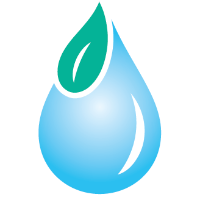Daugherty Water for Food Global Institute
ORCID IDs
http://orcid.org/0000-0001-7216-1397
http://orcid.org/0000-0003-4504-1407
http://orcid.org/0000-0002-4769-5239
http://orcid.org/0000-0001-6490-3733
http://orcid.org/0000-0001-9116-1691
http://orcid.org/0000-0002-5551-3140
http://orcid.org/0000-0002-3573-9759
http://orcid.org/0000-0001-5366-0633
Date of this Version
4-2020
Document Type
Article
Citation
U.S. Government Works
Abstract
Human consumption of freshwater is now approaching or surpassing the rate at which water sources are being naturally replenished in many regions, creating water shortage risks for people and ecosystems. Here we assess the impact of human water uses and their connection to water scarcity and ecological damage across the United States, identify primary causes of river dewatering and explore ways to ameliorate them. We find irrigation of cattle-feed crops to be the greatest consumer of river water in the western United States, implicating beef and dairy consumption as the leading driver of water shortages and fish imperilment in the region. We assess opportunities for alleviating water scarcity by reducing cattle-feed production, finding that temporary, rotational fallowing of irrigated feed crops can markedly reduce water shortage risks and improve ecological sustainability. Long-term water security and river ecosystem health will ultimately require Americans to consume less beef that depends on irrigated feed crops.
Included in
Environmental Health and Protection Commons, Environmental Monitoring Commons, Hydraulic Engineering Commons, Hydrology Commons, Natural Resource Economics Commons, Natural Resources and Conservation Commons, Natural Resources Management and Policy Commons, Sustainability Commons, Water Resource Management Commons


Comments
NATuRe SuSTAiNABiLiTY | VOL 3 | APRIL 2020 | 319–328 | www.nature.com/natsustain